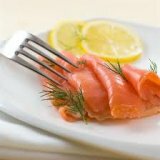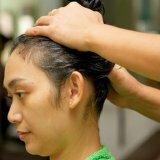Treatment of chronic lymphadenitis

Lymphadenitis is considered to be the process of inflammation of the tissues of the lymph nodes. This disease, in most cases, occurs with the release of pus. According to doctors, the disease provokes such foreign bodies as staphylococci and streptococci penetrating the tissues of the lymph nodes. In most cases, lymphadenitis affects the inguinal and axillary areas.
The causative agents of the described disease are considered to be pyogenic bacteria. They get into the lymph nodes with the current of lymph, starting their way from other infected parts of the body, as well as directly from the environment. Lymphadenitis can occur in both acute and chronic forms.
Acute lymphadenitis occurs with the expansion and disease of the lymph nodes. The disease is often accompanied by malaise, headache, fever and weakness. In the event that the disease begins to progress, then the person's well-being is greatly aggravated. Often there is a fever, reddened infected areas of the skin, acute pains are observed.
The form of chronic lymphadenitis occurs immediately after inflammatory processes - dental diseases, chronic tonsillitis, microtrauma, etc. In this article, we will try to focus on this type of disease, as well as tell you about how treatment of chronic lymphadenitis occurs.
How to cure chronic lymphadenitis?
Treatment of a chronic disease of lymphadenitis, in the first place, should be aimed at combating the root cause of inflammation of the lymph nodes. In the event that lymphadenitis is characterized by a dentogenic or one-to-genic occurrence, the physicians perform interventions directly aimed at fighting foci of the onset of an infectious disease. In this case, the effect on the inflamed lymph node is simultaneously performed.
Treatment is based on the use of antibiotics having a wide range of effects, desensitizing - restorative and antihistamines, sulfonamides, proteolytic enzymes. The course of treatment must include physiotherapy.
In some cases, surgery may also be required, involving the obcadement of a lymph node that is liable to disease. In the early stages of the inflammatory process, lymphadenitis can be treated through physiotherapeutic procedures: microwave, UHF with athermal dose, electrophoresis, compress with dimexide. Also, physicians use the method of irradiation with a helium-neon laser with a power of 100-200 mW / cm3.The number of sessions can vary from 3 to 5. Also, an intramuscular injection of lysozyme with a solution of novocaine( 0.25%) is planned, the amount of which should be limited to 100-200 mg.
It should be noted that in the chronic form of this type of disease, drugs that are aimed at increasing the immunological reactivity of the human body( methyluracil, pentoxyl, pantocrine, Chinese magnolia vine, eleutherococcus, etc.) are also used.
Electrotherapeutic treatment includes phonophoresis, electrophoresis, UHF therapy, irradiation with infrared rays and paraffin therapy.
In case of ineffectiveness of all the above methods, surgical intervention is performed.
Traditional methods of treatment of lymphadenitis:
- One of the most effective ways to treat chronic lymphadenitis is to collect from such useful plants as: capsicum, hawthorn, peppermint and green mint. A tablespoon of mixed plants should be poured with one glass of water, then boil the next broth for two to three minutes. Obtained medicine must be carefully filtered. Drink it is recommended in the morning and evening for a third of a glass.
- You can also steam out cornflower cornflowers. This compress is very helpful in inflammation.
- For the preparation of the next medicine, we need a clover, or rather two parts, part of a tri-colored violet, three leaves of a plantain plant and its seeds, two parts of the St. John's wort, and two parts of its root and wormwood. All ingredients must be crushed and mixed thoroughly. Two tablespoons of the resulting mixture should be poured over with boiling water( half a liter).The broth should be kept one night. After that the medicine will be completely ready. The received infusion is recommended to be taken several times a day for a third of a glass.
- You can also collect flowers of lavender, calendula, elderberry, wormwood herb and currant leaves. All ingredients should be equally divided. They must be crushed and thoroughly mixed, and then pour half a liter of boiled water to the resulting plant mass. Infuse the best broth for half a day. Take should be three to four times a day for a third cup.
- To prepare the next medical infusion, we need to take 10 grams of propolis, pre-chopping it, and 100 ml of alcohol( 70 degrees).To insist this remedy is necessary for ten days, after which it should be carefully filtered. A napkin or a piece of cotton wool soaked in the received infusion, apply to the inflamed place, thereby you can overcome the ailment.
- Excellent decoction, prepared from the following herbs: three parts of sponge, part of wormwood, two parts of valerian( the root of this plant), licorice root, plantain, dill and dandelion seeds. Collected herbs should be thoroughly crushed and mixed, then pour half a liter of boiled water. To insist a remedy is necessary during the night. Drink the resulting broth should be three to four times a day.
- For the preparation of the next healing agent, we need three pieces of walnut and two cloves of garlic. Then you need to pour a glass of water one tablespoon of the collection. After you need to boil in the water bath for three to five minutes, the described broth, for thirty minutes to let him settle. In conclusion, you need to strain the medicine. You can take it about three times a day for one quarter of a glass.
We hope that all of the above will bring you great benefits. Watch your health, because it is the main component of our happy life!



